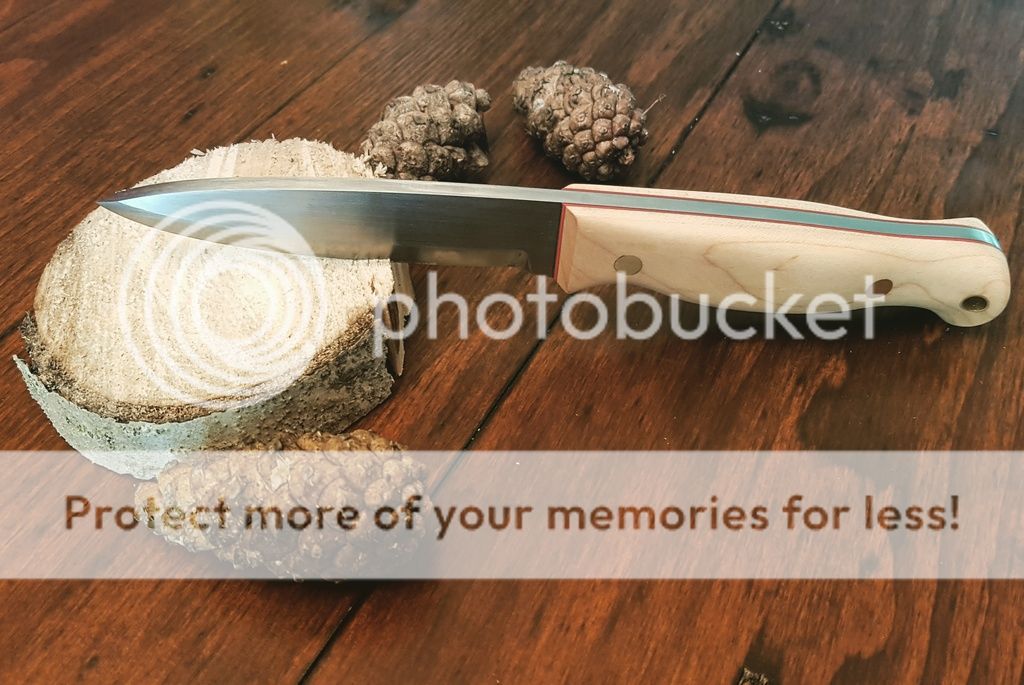- Joined
- Oct 27, 2015
- Messages
- 17
This is my 3rd knife I have made. It's the first with a full metal tang. So it's my first crack at doing scales.
This knife is just a beater knife, it's a proof of concept. I am going to use it a lot and see if and how it fails.
Here is the knife

And here is my problem.

The scales have pulled away at the points.
I sanded the mating surfaces with 60 grit
Cleaned the metal with varsol
Glued with gorilla glue epoxy
Long story short, I was cleaning off my work bench of greasy tools. I used varsol to clean the tools.
A few days later when I was putting the scales on, I had everything laid out ready to glue and I grabbed the varsol to give the blank one last cleaning. I had the acetone out and sitting there, but in my excitement I subcontiously grabbed the wrong one. Didn't think of my mistake until after it was all together.
Would the varsol prevent a good adhesion and cause this problem?
My main concern is water getting in. Can I just use crazy glue to fill the the tiny gap?
This knife is just a beater knife, it's a proof of concept. I am going to use it a lot and see if and how it fails.
Here is the knife

And here is my problem.

The scales have pulled away at the points.
I sanded the mating surfaces with 60 grit
Cleaned the metal with varsol
Glued with gorilla glue epoxy
Long story short, I was cleaning off my work bench of greasy tools. I used varsol to clean the tools.
A few days later when I was putting the scales on, I had everything laid out ready to glue and I grabbed the varsol to give the blank one last cleaning. I had the acetone out and sitting there, but in my excitement I subcontiously grabbed the wrong one. Didn't think of my mistake until after it was all together.
Would the varsol prevent a good adhesion and cause this problem?
My main concern is water getting in. Can I just use crazy glue to fill the the tiny gap?



